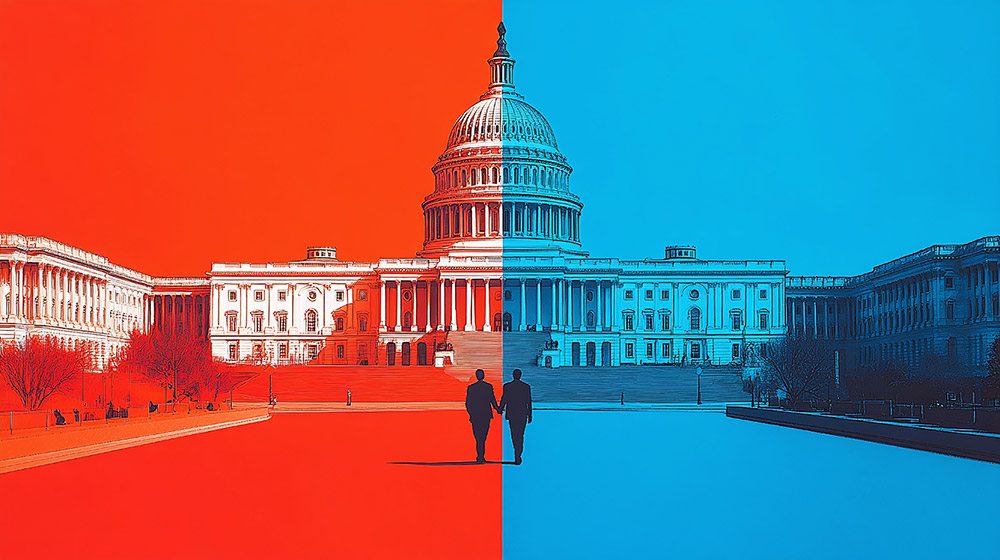Editor's Note: This article is part of Area Development's Auto/Aero Special Report in the Q3 2024 issue. It was commissioned and edited by Dennis Cuneo who served as guest editor for this special coverage.
The automotive industry is experiencing its most profound transformation since Henry Ford introduced the assembly line, and this has implications for state and local economic developers. The rapid shift from internal combustion engines (ICE) to electric vehicles (EV) is a global phenomenon. Last year, nearly 1 in 5 new vehicles sold around the globe were electric, led by China where 8 million new EVs were sold. The pace of EV adoption in the U.S. is slower, but still significant, being driven by federal mandates and incentives aimed at accelerating the adoption of cleaner technologies. The upcoming November election will significantly impact the auto industry in America, shaping how it navigates this monumental transition.Federal policies favoring EVs include substantial tax credits for consumers and manufacturers, making EVs more affordable and stimulating production. Stringent fuel efficiency standards for ICE vehicles add pressure to transition to electric powertrains. Additionally, 15 states have enacted laws banning the sale of new ICE vehicles starting in 2030.
To be sure, the transition to EVs has faced significant obstacles. High costs, range anxiety, and a lack of robust charging infrastructure have slowed the rate of consumer adoption. Despite improvements in battery technology, the upfront cost of EVs remains high, and concerns about range and charging availability persist. While urban areas have growing numbers of charging stations, rural and suburban regions lag, limiting the practical usability of EVs. China has emerged as a dominant force in EVs. This lead is evident in several critical areas such as battery chemistry, advanced manufacturing, and EV production. Understanding the implications of China's advancements and developing strategies to address them is crucial for the United States' national security and economic competitiveness.
The role of the November election cannot be underestimated and will shape the future of the American auto industry's transition to EVs for decades to come.
The role of the November election cannot be underestimated and will shape the future of the American auto industry's transition to EVs for decades to come. Key areas of impact include:
Regulatory environment
Election results could shift federal and state policies. Continuation or expansion of current mandates and incentives would accelerate the transition, while a rollback might provide temporary relief for ICE manufacturers but hinder long-term progress.
Infrastructure investment
Future administration policies will determine investment levels in EV infrastructure. Significant federal funding for charging stations and grid improvements could alleviate major barriers to EV adoption.
R&D support
Increased funding for research and development in battery technology and other EV-related innovations could lower costs and improve performance, making EVs more competitive with traditional vehicles, and enhancing the competitiveness of American automakers.
A repeal of the IRA would have an immediate and significant impact on EV adoption in the U.S. and could result in stranded EV-related investment. Inflation Reduction Act
The IRA provides significant incentives for the production and purchase of EVs and has spurred over $100 billion in new EV-related investment since it was passed. A repeal of the IRA would have an immediate and significant impact on EV adoption in the U.S. and could result in stranded EV-related investment. Recently, a GM board member warned that repeal of the IRA would likely result in losing automotive manufacturing share to China. Geography of EV-related investment
A significant amount of EV and battery investment is taking place in Southern states, such as Tennessee, Texas, North Carolina, and South Carolina, and Western states, such as Arizona and Nevada. If federal policy towards EVs changes, there is a risk of stranded investment in those states. Conversely, traditional automotive production states such as Michigan, Ohio, and Indiana—where many of the ICE assembly, engine, and parts plants are located—stand to benefit if the transition to EVs is delayed, although each of those states have also secured billions of dollars in EV-related investment.
$100 billion -- that’s the amount of new EV-related investment spurred by the Inflation Reduction Act. Trade policy
The Biden Administration recently announced an additional 100% tariff on EVs made in China—adding to the 25% tariff on Chinese vehicles imposed by the Trump Administration. Currently, Chinese vehicles made in Mexico or Canada would be exempt from these tariffs under the USMCA trade agreement. If this is changed, Chinese automakers would be forced to build in the U.S. to sell in this market, as the Japanese automakers did in the 1980s and 1990s. Obviously, the prospect of significant Chinese investment in new EV assembly and battery plants in the U.S. would be of interest to many economic developers—but Chinese investment also brings the potential for controversy.
In summary, the November election stands as a pivotal moment for the auto industry, influencing the pace and direction of its revolutionary transition. As the industry grapples with unprecedented challenges, the decisions made by voters and policymakers will shape the future of mobility, driving us towards a more sustainable and innovative automotive landscape. All of this will have an impact on economic developers who seek to attract automotive investment and jobs.
